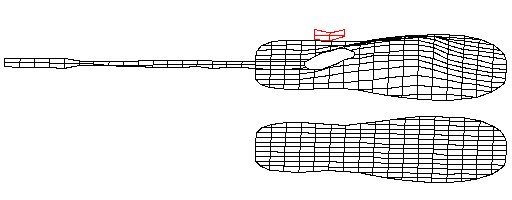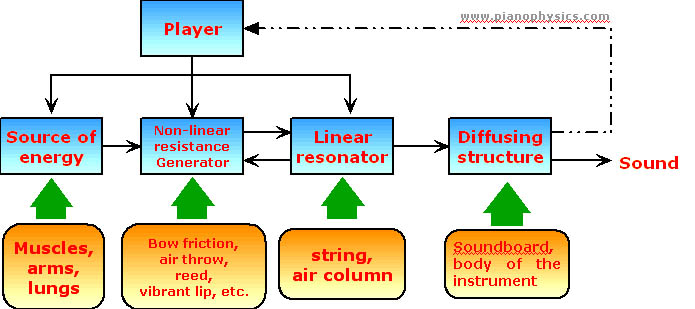Musical instruments are vibrant bodies constituted of strongly connected resonating oscillators, they are classified according to the nature of the main resonator in: string, wind, and percussion instruments.
Musicologists classify instruments in: Cordofoni (string instruments), Aerofoni (breath instruments), Idiofoni (tubular bells, xylophones, marimbes, etc.), and Membranofoni (timpani, drums, etc); the last two categories are considered percussive instruments.
To these can be added the digital electronic synthesizer and the human voice. Other musical instruments classification introduces a specialization of research in Psycho-Acoustic, that is the study of the separation and differentiation of instruments sounds according to perception criteria. Physical behaviour of resonants bodies requires that any instrument in order to emit sound needs to be fed by an external source of energy, this is achieved in different ways.


we see here the multiple forms of energy which result from the interaction with human body: the performer, in the act of playing, introduces energy in a broad variety of configurations. Independent from instrument type musician brings in the system linear and not linear components that can be modulated through (outlined line) a parallel dynamic hearing process, a concatenation ruled absolutely by perceptive data. With the sense of hearing the player monitor and adjust the sound produced by the instrument, if the sound is not likely that one he expects he will adjust his movements to change it, the player becomes hence a part of a control closed circuit while he performs. Hence there is a way through which the current information concerning the instrument's response can be as well considered, the retroactive effect of haptic sensation. Convergent aspects are many, the senses of touch and kinesthetic comprehension, i.e., the sense that also detects bodily position, weight, and movement of the muscles, tendons, and joints, etc. This is specially important in a polyphonic-very massive instrument like piano, the perception process is closely related to aural perception at play too.


